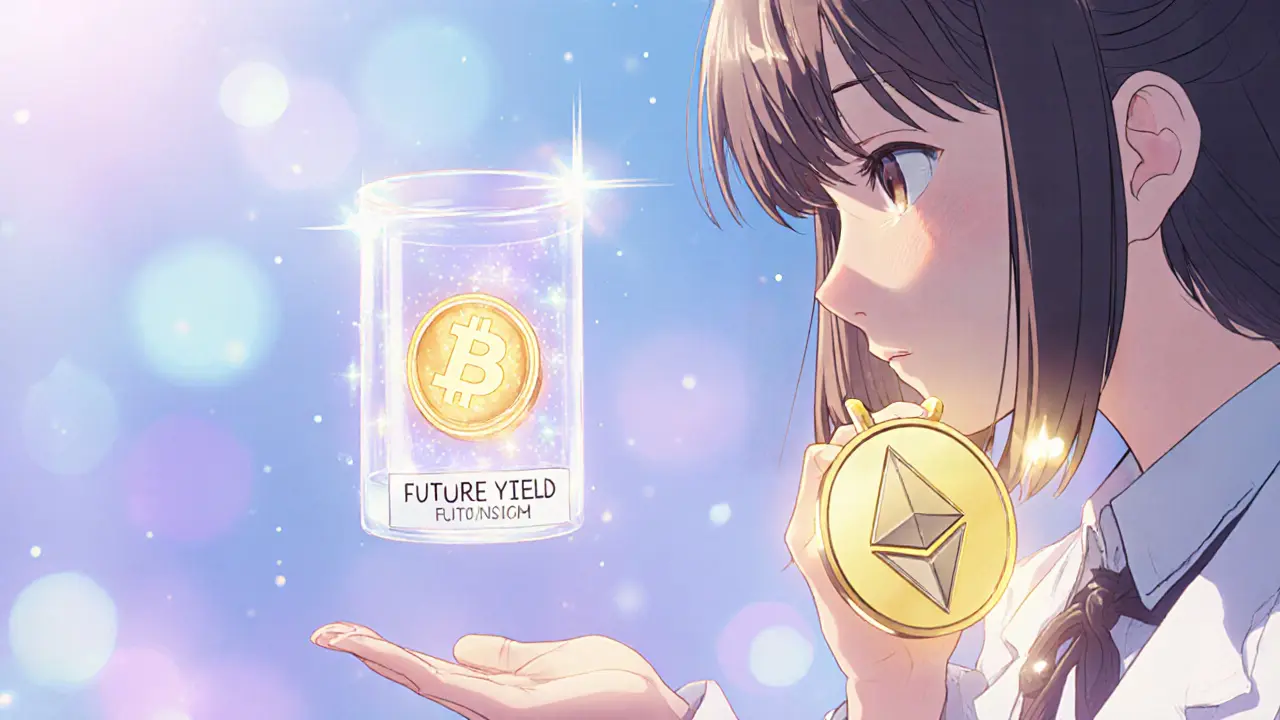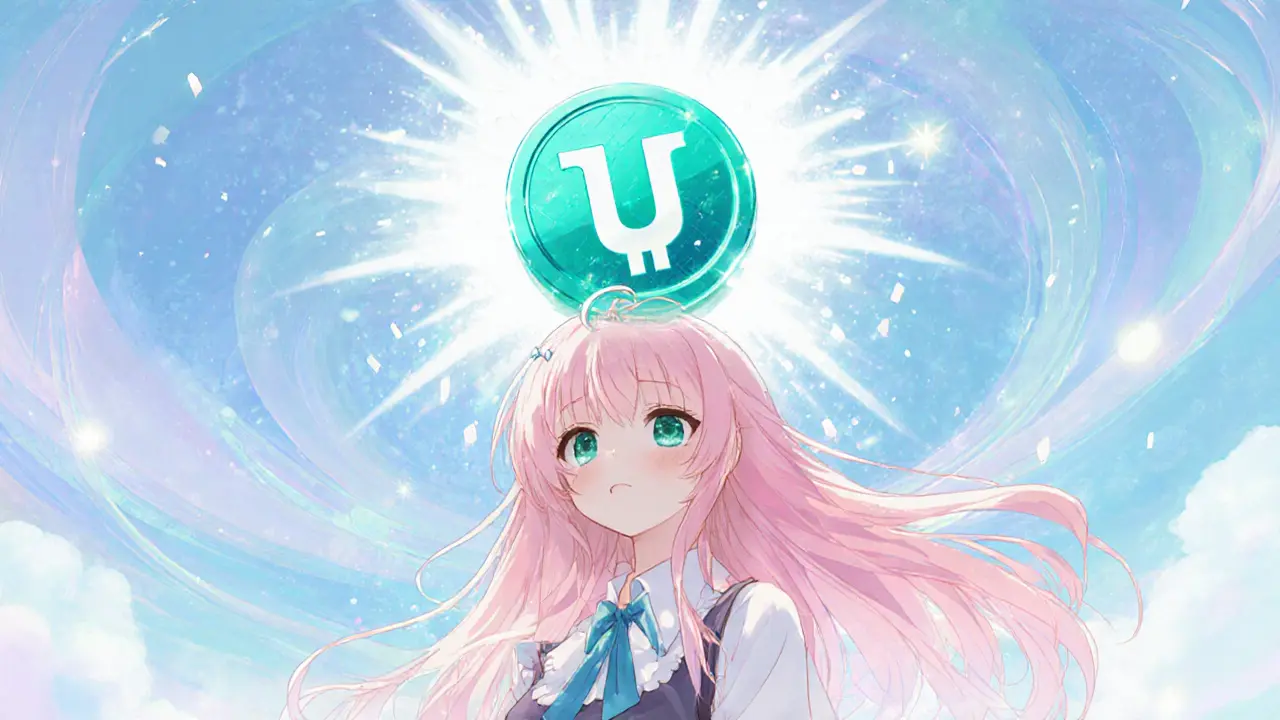Unreal Finance (UGT) Token Value Simulator
Token Overview
Unreal Finance (UGT) was a yield-futures platform aiming to tokenize future interest earnings in DeFi. The token has a fixed supply of 200 million and experienced a dramatic price decline since its peak in 2021.
Total Supply: 200,000,000 UGT
All-Time High: $0.3771
Current Price: $0.00034
Market Cap: ~$68,000
Trading Volume (24h): $0
Status: Inactive (No Liquidity)
Development: Abandoned (No Updates Since 2021)
Historical Price Simulation
Visualize how much your UGT holdings could be worth based on different price scenarios. Note: These simulations reflect hypothetical values only.
Token Distribution Visualization
See how the 200 million UGT supply was allocated across different investor groups.
Note: Public sale represented only ~0.15% of total supply. Majority went to private and strategic investors.
Comparison with Competitors
Compare Unreal Finance with leading DeFi derivatives platforms.
| Platform | TVL (2025) | Status | Current Price |
|---|---|---|---|
| Unreal Finance (UGT) | $0 | Inactive | $0.00034 |
| Hegic | $30M | Active | $0.06 |
| Opyn | $15M | Active | $0.04 |
| BarnBridge | $25M | Active | $0.07 |
| Pendle | $100M | Active | $0.12 |
When you first hear the name Unreal Finance is a yield‑futures platform that lets users tokenise future interest earnings across multiple DeFi protocols, the promise sounds enticing: lock in rates, hedge volatility, even trade your expected interest. Yet three years later the token sits at a few fractions of a cent with zero daily volume, and the ecosystem feels abandoned. This guide unpacks exactly what Unreal Finance (UGT) was meant to be, how its technology works, the token’s economics, why the market has essentially left it behind, and what you should consider before touching the coin today.
Key Takeaways
- Unreal Finance aimed to create a multichain layer for tokenising future yields, but the platform never delivered functional liquidity.
- The UGT token has a fixed supply of 200million, with most of the allocation sold during a 2021 Token Generation Event (TGE) at prices between $0.05 and $0.12.
- Since its peak price of $0.3771 on August252021, UGT has lost over 99% of its value and now trades at roughly $0.00034 with virtually no volume.
- Competing DeFi derivatives like Hegic, Opyn, BarnBridge, and Pendle offer active markets and higher TVL, making them far safer for yield‑hedging strategies.
- Given the lack of development, liquidity, and community support, Unreal Finance is best viewed as a historical, high‑risk asset rather than a viable investment.
What is Unreal Finance (UGT)?
Unreal Finance positions itself as a Yield futures platform built on top of existing DeFi lending markets such as Aave and Compound. The core idea is simple:instead of borrowing or lending directly, users mint a token that represents a claim on future interest income. That token can then be sold, bought, or used for arbitrage across protocols. The native utility token, UGT, powers governance and fee distribution.
The project launched its Token Generation Event on 25August2021 at 09:55UTC+3, raising roughly $3.15million across seven funding rounds. The TGE marked the moment when the first UGT tokens were minted and distributed to investors.
How the Yield Futures Mechanism Works
Imagine you have deposited 10ETH into Aave and expect to earn about 4% APR. Unreal Finance allows you to lock that future interest into a future‑yield token. Once minted, you can:
- Hold the token to receive the actual interest when it materialises.
- Sell the token now for a price that reflects market expectations of future rates.
- Buy the token if you believe interest rates will rise, effectively betting on higher yields.
From a technical standpoint, the platform sits as an additional DeFi layer that interacts with other protocols via standard ERC‑20 token calls. Unfortunately, the smart‑contract code never reached a production‑ready state, and no public liquidity pools were ever launched. Users who tried the UI in late 2021 reported broken screens and failed transactions, meaning the theoretical model never became usable.

Tokenomics and Distribution
The UGT token has a hard cap of 200million. Allocation was split across several rounds, each with its own vesting schedule:
| Round | Supply % | Price (USD) | Raised (USD) | Vesting |
|---|---|---|---|---|
| Seed | 0.25% | $0.05 | $500,000 | 10% day30, 3‑month cliff, 10% monthly |
| Private | 0.75% | $0.095 | $1,500,000 | 20% at TGE, 3‑month cliff, 8.89% monthly |
| Strategic | 0.35% | $0.075 | $700,000 | 15% at TGE, 3‑month cliff, 9.44% monthly |
| Pre‑Public | 0.04275% | $0.095 | $85,500 | 20% at TGE, 20% monthly |
| Public | 0.15% | $0.12 | $300,000 | 100% at TGE |
Overall, less than 2% of the total supply was sold to the public, while the majority went to private and strategic investors. Vesting schedules meant that a steady drip of tokens continued to hit the market well into 2022, diluting any early price gains.
Market Performance and Price History
At launch, UGT opened at $0.3771 - the all‑time high recorded by CoinGecko. Over the next six months, the price fell sharply as liquidity never materialised. By early 2023 the token was trading below $0.01, and as of October92025 it sits at roughly $0.00034 with a 24‑hour volume of $0, according to CoinMarketCap. The market cap, calculated from 200million supply, is now under $70k - a fraction of its initial $75million valuation.
The price collapse represents a loss of about 99.91% from its peak. Unlike more resilient projects such as Yearn.finance (YFI), which retained roughly 15% of its ATH, UGT has essentially become a dead coin.
How Unreal Finance Stacks Up Against Competitors
Several DeFi protocols offer similar yield‑hedging or derivative products. Below is a quick side‑by‑side view:
| Feature | Unreal Finance (UGT) | Hegic | Opyn | BarnBridge | Pendle |
|---|---|---|---|---|---|
| Core product | Yield futures (future‑interest tokens) | European‑style options | Options & vaults | Yield tranches | Yield tokenisation & trading |
| Live liquidity pools | No (as of 2025) | Yes | Yes | Yes | Yes |
| TVL (2025) | $0 (none tracked) | $30M | $15M | $25M | $100M |
| Multichain support | Theoretically multichain, never implemented | Ethereum, BSC | Ethereum, Polygon | Ethereum | Ethereum, Arbitrum, Optimism |
| Community activity | Defunct (no Discord/Telegram since 2021) | Active | Active | Active | Active |
| Current price (USD) | $0.00034 | $0.06 | $0.04 | $0.07 | $0.12 |
In every practical metric, Unreal Finance falls short. The lack of any liquidity pool means you cannot actually sell or buy UGT on‑chain, turning the token into a paper‑only asset.

Current Status and Risk Assessment
All major indicators point to abandonment:
- No code commits on the GitHub repo since October2021.
- Official Medium blog stopped publishing after the TGE announcement.
- Discord and Telegram channels show zero activity since early2022.
- Zero 24‑hour trading volume on both CoinGecko and CoinMarketCap.
- Liquidity risk - you likely cannot exit a position without paying massive slippage.
- Regulatory uncertainty - yield derivatives fall into a gray area in many jurisdictions.
- Technology risk - no functioning smart contracts mean the promised feature set is unavailable.
Should You Consider Buying UGT?
If your goal is to earn yield or hedge interest rates, the answer is a clear no. The platform does not provide any usable market, and the token’s price action shows no sign of recovery. The only scenario where buying makes sense is a pure collector’s motive - perhaps you want a token that illustrates the rise and fall of 2021 DeFi hype. Even then, the transaction fees on Ethereum would likely outweigh the sentimental value.
For actual yield‑trading, look at established alternatives like Pendle Finance or BarnBridge, which have active liquidity, TVL, and ongoing development roadmaps.
Frequently Asked Questions
What problem was Unreal Finance trying to solve?
It aimed to let users lock in future interest earnings as tradable tokens, providing a way to hedge DeFi rate volatility without borrowing or lending directly.
Is the Unreal Finance platform still operational?
No. The smart contracts never went live in a usable form, and all community channels have been silent since 2021.
How many UGT tokens exist?
The total supply is fixed at 200million UGT.
Can I still buy UGT on any exchange?
The token is listed only in the Binance Web3 Wallet, but with zero daily volume you’ll likely pay more in gas than the token’s value.
What are the main alternatives to Unreal Finance?
Projects like Hegic, Opyn, BarnBridge, and Pendle offer active options or yield‑token markets with real liquidity and ongoing development.


Matthew Laird
October 9, 2025 AT 09:21People keep bragging about making a quick buck with dead coins, but real American ingenuity belongs in building real infrastructure, not chasing phantom tokens that vanish faster than a TikTok trend.
Caleb Shepherd
October 9, 2025 AT 11:51What most don’t see is that the silence around UGT is intentional, a coordinated effort by big banks and shadowy regulators to keep us from discovering truly decentralized hedge tools that could undermine their control.
Marcus Henderson
October 9, 2025 AT 14:21From a risk‑assessment standpoint, the absence of on‑chain liquidity fundamentally invalidates any claim of market viability. The token’s price trajectory, having lost over 99 percent of its value, indicates a systemic failure rather than a temporary dip. Moreover, the lack of code commits since 2021 suggests that development has been abandoned, removing any prospect of future upgrades. In such an environment, investors are exposed to both liquidity risk and regulatory uncertainty. While the theoretical yield‑futures model is intellectually appealing, its practical implementation never materialised. Consequently, the prudent course is to regard UGT as a historical artifact rather than a viable asset. The broader DeFi ecosystem offers alternatives with active communities and proven smart‑contract audits. It is advisable to redirect capital toward those platforms that demonstrate sustained activity. Lastly, the moral dimension of supporting a dead project should not be overlooked; resources could be better allocated to projects that contribute to genuine financial inclusion.
Andrew Lin
October 9, 2025 AT 16:51Look, i cant cofned that this was some big plan-its just a half‑baked idea that never got off the ground. The devs quit, the community ghosted, and now the token is basically dust. If you think it’s gonna bounce back, you’re dreaming too big.
Brian Lisk
October 9, 2025 AT 19:21Unreal Finance set out with an ambitious vision to tokenize future yield, a concept that at first glance seemed poised to revolutionize DeFi hedging strategies; however, the execution fell dramatically short of expectations. The tokenomics allocated a mere 0.15 percent of the total supply to the public sale, concentrating the majority of tokens in private and strategic hands, which seeded immediate centralization concerns. Vesting schedules extended well into 2022, resulting in a continuous drip of supply that diluted any early price appreciation. The token’s all‑time high of $0.3771 in August 2021 was a fleeting peak, quickly eroded by the absence of any functional liquidity pools. Subsequent price movements saw a steep decline, with the market cap shrinking from an estimated $75 million at launch to under $70 k today. Compounding the issue, the underlying smart‑contract code never reached a production‑ready state, leaving users with a broken UI and failed transactions. Community engagement also vanished; Discord and Telegram channels fell silent by early 2022, signaling a lack of developer support. In contrast, contemporaneous projects such as Hegic and Pendle continued to grow their TVL and active user bases. The result is a stark illustration of how hype without substance can lead to a dead‑coin scenario. Investors who entered during the hype phase have effectively lost over 99 percent of their capital, a loss comparable to many other 2021 ICO failures. For those seeking genuine yield‑hedging mechanisms, platforms with active governance, audited contracts, and robust liquidity remain the preferred choice. In summary, Unreal Finance serves as a cautionary tale: innovative ideas require rigorous implementation, community backing, and ongoing development to survive in the competitive DeFi landscape.
Richard Bocchinfuso
October 9, 2025 AT 21:51i cant believe ppl still throw cash at this junk when there’s literally zero volume, it’s just a sad reminder of 2021 hype gone bad.
Melanie LeBlanc
October 10, 2025 AT 00:21Remember, even a wreck can teach you how not to sail; the Unreal Finance story shows why diversification and due‑diligence are your best compasses in the stormy seas of crypto.
Monafo Janssen
October 10, 2025 AT 02:51It’s easy to feel discouraged, but looking at the bigger picture helps. Many projects fail, and that’s a natural part of innovation. Learning from these missteps makes us stronger investors.
Bryan Alexander
October 10, 2025 AT 05:21Picture a world where the next hidden gem rises from the ashes of abandoned tokens, where brave souls spot value where others see dust, and where ingenuity turns a dead coin into a fresh opportunity.
Patrick Gullion
October 10, 2025 AT 07:51Sure, most think it’s a lost cause, but that’s exactly why a bold few might turn it around and prove the skeptics wrong.
Jack Stiles
October 10, 2025 AT 10:21Just looking at the charts, the volume is basically zero and the price stuck at a fraction of a cent, so there’s nothing really to trade.
Ritu Srivastava
October 10, 2025 AT 12:51It is unacceptable that anyone would promote a dead token as an investment when the community has abandoned it and developers have vanished.
Nicholas Kulick
October 10, 2025 AT 15:21UGT lacks liquidity, has zero TVL, and the code was never fully deployed, making it a non‑starter for serious investors.
Moses Yeo
October 10, 2025 AT 17:51Indeed, the token’s market data-zero daily volume, negligible market cap, no active pools-clearly indicates a stalled project; consequently, allocating capital here offers little to no upside; therefore, a prudent approach is to redirect funds toward assets with demonstrable activity and transparent governance.
Lara Decker
October 10, 2025 AT 20:21Seen it, moved on.